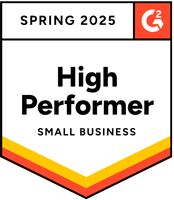Mastering SEO best practices for on-page optimization is akin to discovering the map to hidden treasure. Whether you’re a blogger, a small business, or an e-commerce giant, these strategies ensure your website stands out in the vast sea of online content. This isn’t just about playing by the rules of search engines; it’s about crafting an experience that resonates with your audience, making your digital space not just seen, but felt and remembered.
It’s the art and science of blending relevance, readability, and responsiveness, ensuring that each visitor’s journey through your site is engaging, informative, and seamless. From the moment they land on your page to the instant they share your content, every element should be optimized not just for search engines, but for real people with real needs and desires.
Imagine your website as a vibrant, bustling city. Your headlines are the welcoming billboards, your content the intriguing conversations happening on every street corner, and your images the landmarks that guide and delight visitors. In this city, every path is clear, every signpost is readable, and every destination is worth visiting. This is the promise of effective on-page optimization—it turns your website into a destination of choice, not just a stop along the way.

SEO Best Practices for On-Page Optimization: Crafting a Foundation for Success
Mastering this art it’s about ensuring every aspect of your site is perfectly aligned not just for search engines but for providing an unmatched user experience. Understanding the core elements of on-page SEO is crucial in this journey, enabling your website to communicate effectively with your audience and search engines, ensuring your content is both discovered and appreciated.
1. Title Tags and Meta Descriptions: Your Digital First Impression
The title tag and meta description are the forefront of your site’s interaction with potential visitors. They are the first glimpse of what your site has to offer, making it essential to craft them with precision. A title tag should encapsulate the essence of your page content while being engaging and informative, fitting within the 75-character limit for optimal visibility in search results.
Your meta description acts as a brief yet compelling summary of what visitors can expect, playing a significant role in influencing click-through rates. Crafting a meta description that effectively communicates the value of your content can make all the difference in drawing in your audience. Both elements are foundational in applying SEO best practices for on-page optimization, setting the stage for a positive user experience.
2. Headings and Content: The Architecture of Your Online Presence
The organization of your site’s content through headings is critical for readability and SEO. Using headings to break down your content into manageable sections not only aids in reader engagement but also helps search engines understand the hierarchy and relevance of your information. The main heading (H1) should clearly reflect the primary focus of your page, drawing readers in and guiding them through your content.
Beyond structure, the body of your content is where you truly connect with your audience. It’s about more than just integrating keywords; it’s about creating value through informative, engaging content that resonates with your readers. This approach is central to on-page optimization, fostering a deeper connection with your audience and establishing your site as a trusted resource.
3. Image Optimization: Enhancing Your Visual Storytelling
Images play a critical role in complementing your content, offering visual breaks, and explaining complex concepts. Optimizing images is a key aspect of enhancing your site’s SEO and user experience. Properly selected and optimized images can break up text, illustrate concepts, and engage users, all while contributing to your site’s SEO performance. Utilizing descriptive file names and alt text for images not only aids in search engine indexing but also improves accessibility, aligning with SEO best practices for on-page optimization.
4. URL Structure: Paving Clear Paths Through Your Digital Domain
A clear, descriptive URL structure is paramount for both user experience and SEO. URLs that succinctly convey the content of the page help users and search engines understand the relevance of your content. Keeping URLs short, readable, and including relevant keywords ensures they contribute positively to your site’s overall SEO strategy.
5. Mobile Optimization: Embracing the Mobile-first World
In today’s mobile-first world, ensuring your website is optimized for mobile devices is crucial. A mobile-friendly site is not just about aesthetics; it’s about providing a seamless, engaging experience for users on the go. Google’s mobile-first indexing means that the mobile version of your website becomes the primary version used for ranking. A mobile-optimized site loads quickly, is easy to navigate on a small screen, and offers an intuitive user experience, crucial factors in maintaining the interest and engagement of your mobile audience.
Implementing SEO best practices for on-page optimization is an ongoing process that requires attention to detail and a deep understanding of your audience’s needs and search engine algorithms. By focusing on these foundational elements, you’re not just optimizing your site for search engines; you’re creating a welcoming, engaging digital space that resonates with visitors, encouraging them to return.
6. Linking Internally: Connect Your Content
Internal linking is a powerful yet often overlooked aspect of SEO best practices for on-page optimization. By strategically linking to other pages within your site, you can guide visitors to more relevant content, increasing their time spent on your site and reducing bounce rates. Use descriptive anchor text that gives readers a clear idea of what to expect from the linked content. This not only enhances the user experience but also strengthens your site’s SEO by distributing page authority throughout your site and helping search engines discover and index new pages.
Implementing SEO best practices for on-page optimization is an ongoing process that requires attention to detail and a deep understanding of your audience’s needs and search engine algorithms. By focusing on these foundational elements, you’re not just optimizing your site for search engines; you’re creating a welcoming, engaging digital space that resonates with visitors, encouraging them to return.












